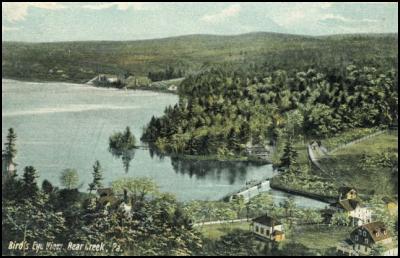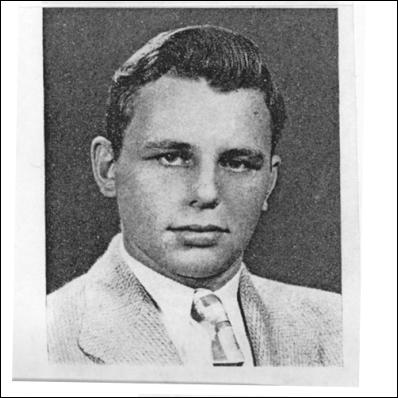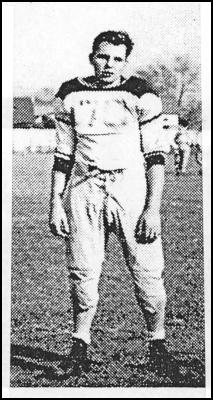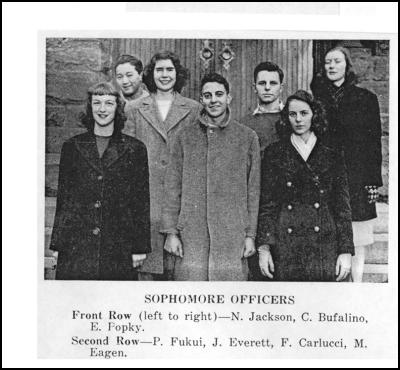Suzan Mazur: Unspooking Frank Carlucci
Unspooking Frank Carlucci
by Suzan Mazur
I remember getting stuck more than once in winter blizzards at Bear Creek - the northeast Pennsylvania boyhood home of Carlyle Group's Frank Carlucci. Route 115 cuts through the woods there before winding down the mountain to where I grew up in the 1960s - Wyoming Valley, the intended place of exile for Marie Antoinette.
Bear Creek was aptly named. In the 1940s when Carlucci lived there, it was still a vast forest of pine and hemlock set off by a 100-acre lake. Settlement first began following General George Washington's 1778 order for troops to cut a road through to reach Wilkes-Barre and even the score with Native Americans and Tories following an attack on residents in the area. It evolved into a lumber and ice company town in the 1800s and later into a mountain getaway for the Wyoming Valley elite. A place where a kid could watch the evolution of ferns undisturbed. Peer through streams and dote on mossy pebbles. Get their dog drunk, etc.
Bear Creek is still a natural wonderland despite the arrival of commercial winter sports, suburban development and the remaking of lumber baron Al Lewis's 19th century Tudor mansion into a hotel adjacent to Bear Creek dam.

Click for big version
Bear Creek, PA
But Carlucci, after mastering the life of a woodsman, was ready for new challenges. He promptly left the region following graduation -- cum laude, class of '48 - from the elite Wyoming Seminary prep school in Kingston: "Where the Susquehana's waters/Kiss her golden sands,/'Mid the hills of fair Wyoming,/Alma Mater stands."

Ironically, however, it would be Carlucci's official appointment to northeast Pennsylvania as "flood czar" in 1972 - 24 years later - not his exotic foreign service postings in between in the 1960s, that would first bring him national prominence.
Serving as Deputy Director of the Office of Management and Budget in Washington, D.C., Carlucci was hand-picked by President Nixon and tasked with undoing the destruction wrought by Hurricane Agnes. Agnes had soaked Wyoming Valley with 14 trillion gallons of water, breaking the banks of the Susquehana River. The storm sent flood waters 40 feet deep and two miles wide coursing through the quaint little towns there. Four people died, 64,000 homes and 3,000 small businesses were damaged.
Carlucci brought in the Army Corps of Engineers to rebuild dikes and install dams in the upper tiers of the river. Prior to this, local residents lived in fear of the floodwaters of the mighty Susquehana, much like the Valley's previous inhabitants - the Shawnee, Nanticoke and Iroquois. OMB Deputy Director, Carlucci funneled $2.1 billion dollars to northeast Pennsylvania to rebuild the infrastructure.
In the process, he also helped to save Wyoming Seminary. It was the first time federal money - a $3.4 million grant - would be used to "bail out" a church-related (Methodist) private school, which some, including former Seminary French and Civics Professor Herb Quick, said was "perhaps even unconstitutional". Quick said the principal contractor for repairing the school was Grosik & Sons, but that Sordoni Construction was also involved in the cleanup.
Quick's impressions of Carlucci are otherwise positive, "One genuinely expects not a great deal from politicians . . . but there was a certain calm, knowledge, control. When on television he [Carlucci] seemed to be seriously concerned about his responsibilities. Competent, lacking in arrogance."
Theodore Abbot, a former Seminary professor of Carlucci's commented to Wilkes Barre's Sunday Independent newspaper at the time of the flood that "Frank Carlucci never came into my classes unprepared", and he described Carlucci "walk[ing] around the devastated areas with his wife and young child in his arms."
The late Daniel J. Flood (Dem - NE PA), who chaired the House appropriations committee for Labor, Health, Education and Welfare from 1967 - 1979, also helped to channel flood relief dollars. Congressman Flood was a former Shakespearean actor who wore a waxed whiplash mustache and was known inside the Beltway as "Dapper Dan".
In Wyoming Valley, Flood was a hero and had an elementary school named after him. But he would leave office in disgrace after 31 years, pleading guilty in 1980 to "conspiracy to violate federal campaign laws". He was given a year's probation.
Flood's former aide, Stephen Elko, quoted in Time magazine, March 1978, described him as "Congress's most successful 'muscler,' an official who used his considerable influence to direct federal contracts to people and companies that said 'thank you' in cash."
Carlucci remained "above reproach" during those same years - moving seamlessly from appointment to appointment. He was a Foreign Service Officer from 1956 - 1969, Assistant Director and then Director of the Office of Economic Opportunity (69-71), Associate Director and then Deputy Director of the Office of Management and Budget (71-72), Undersecretary of the Department of Health, Education and Welfare (72-74), Ambassador to Portugal (75-78) and Deputy Director of the CIA (79-81).
Prior to this, he studied at Princeton. He was a Woodrow Wilson fellow there. Carlucci roomed and wrestled with the current Secretary of Defense, Donald Rumsfeld. Also in the Princeton class of 1952 was future Secretary of State and Carlyle crony, James Baker.
But friends say the foreign service was Carlucci's "first love". Following Princeton, two years in the Navy on the West Coast and studies at Harvard Business School, Carlucci took up FSO posts in South Africa, Congo, Zanzibar and Brazil.
He has been accused of having a role in the 1960s plot to assassinate the democratically elected leader of the Congo, Patrice Lumumba, while serving at the US embassy in Congo. But Carlucci has denied any involvement.
According to a 1973 Wyoming Seminary press release, however, he was attacked in an unrelated encounter with fists and sticks by an angry Congolese mob and stabbed in the back after a car in which he was riding with an army colonel hit and killed a Congolese bicyclist. He was subsequently tagged as an "undesirable" and "ejected" from the Congo, although the State Department would later present him with a "Superior Service Award" for his courage there.
So when Raoul Peck's film "Lumumba" was released, Carlucci had his lawyers pressure the distributor to remove him from the HBO presentation. Carlucci said the scene was a "cheap shot" and he commented to reporters at the film's premiere, "I was never as fat as that guy."
More recently, a source who was in Congo at the time and who was close to the diplomatic and foreign business community, said that they believe the system is to blame for the murder of Lumumba not simply a man or a handful of men. But they've also said some of the secrets of what happened may rest with Belgian-born diamond dealer Maurice Tempelsman, companion of the late Jackie Kennedy Onassis.
According to New York-based author Lucy Komisar, the Belgian government has now apologized to the Lumumba family for its role in the killing of Patrice Lumumba. And Australian author, Janine Farrell Robert, in "The Secret Story Behind Blood Diamonds" has noted that the [Frank] Church committee and declassified State Department documents reveal Belgium, the US and Mobutu Sese Seko all plotted to bring Lumumba down.
Janine Robert explains that Tempelsman was a middleman for De Beers and often helped to shape US foreign policy. She writes:
"When Lumumba, Congo's first elected leader, spoke of using the Congo's resources to benefit the Congo, DeBeers feared it would lose access to the one third of the world's diamond supply in the Congo - as would also Tempelsman. Shortly after this, the CIA facilitated Lumumba's assassination. . . . Immediately after Lumumba's death, the Acting Prime Minister of the Congo, Adoula, announced support for a very major Tempelsman diamond deal, telegramming this to President Kennedy."
Robert also cites historian Richard Mahoney regarding the Adoula regime receiving funds from Tempelsman, refering to a State Department memo: "Congo Diamond Deal: stated 'The State Department has concluded that it is in the political interest of the US to implement this proposal.' (2 August 1961)."
Robert adds that immediately after Mobutu came to power, "Tempelsman became an even bigger player in the Congo - recruiting his own staff from those CIA staffers that Mobutu most favored that put him in power. [This concurs with my source, who was "on the ground" at the time and says Tempelsman's offices in Africa were CIA fronts.] Mobutu also at this time gave Tempelsman, as a ' Christman Gift', rich mineral resources." And Robert says Tempelsman then facilitated "the return of the Oppenheimers to the Congo. . ."
Moreover, Robert tells of a plot against Ghana's President Nkrumah in which "the State Department wrote a furious letter to Maurice Tempelsman saying that his office, by using an unguarded phone line, had betrayed the identity of the plotters against Nkrumah and the identity of the CIA Head of Station. The plotters seemingly were communicating to the White House via Tempelsman's office (memorandum for the President from WW Rostow, 24 September 1961)."
On the heels then of Carlucci's African adventures and his successful handling of the Agnes flood in Pennsylvania, he began a rapid climb in public life culminating in the positions of Deputy Director of the CIA, National Security Advisor, Assistant Secretary and then Secretary of Defense before leaving to join the Carlyle Group, first as a Managing Director and later as Chairman of the Board - the deal closer. But it is Carlucci's Pennsylvania years that give a glimpse of the man before he slips into the shadows.
Frank Carlucci III was born in Scranton, Pennsylvania in 1930. Anthracite coal mining fueled the economy there. But Carlucci's first years of life were in an environment now gripped by the Depression, where the demand for anthracite was beginning to disappear. There were few jobs outside the coal industry, and by 1935, 30%-40% of the employable were jobless.
Being tough was a necessary survival skill midst the region's mix of immigrant families and the social upheavals that followed their arrival. One in five residents was an immigrant in the 1930s -- Russians, Poles, Italians -- and a powerful anti-immigrant, anti-Catholic Klu Klux Klan sprang up in northeastern Pennsylvania in "challenge". The Klan operated in the area until WWII, although crosses were still being burned in Clark Summit as late as the 1970s.
By the end of WWII, coal mines began shutting down, giving way to the oil era - even though 19.6 billion tons of anthracite coal remain today in the ground in northeastern Pennsylvania. And while the KKK also began to shut down, protection rackets took their place.
Wilkes Barre's Sunday Independent newspaper reported June 8, 1947 that no one dared say who the $15,000-$30,000 per week to cover the rackets (horse race parlors, prostitution, slots, numbers and gambling dens) was going to, but that several hundred people were believed to be involved in Wilkes Barre alone.

Perhaps to avoid the rough crowd, Carlucci's father, Frank Carlucci II, moved the family to Bear Creek. Friends say the other reason was that young Frank's mother died. He was just 13 years old - a profoundly tough age for a boy to lose his mother.
Though Carlucci's father remarried, relocating the family to Bear Creek was intended to bring them closer to his first wife's family, the Magagnas, who also lived there. Carlucci was especially fond of his Uncle "Wish". His childhood home at Sands Spring Run, Bear Creek was intact up until a couple of years ago when it got washed away in a flash flood as eight inches of rain fell in a single day.
Carlucci's father was a life insurance agent for Connecticut Mutual and a graduate of Lafayette College where he belonged to a Waspy fraternity. The family roots were Italian but the family were not practicing Catholics; they worshiped at a nondenominational Protestant church in Bear Creek.
Carlucci's grandfather, Frank Carlucci I, was an immigrant from southern Italy. He was one of the contractors who built Wyoming Valley's landmark courthouse. He also built federal offices in Washington, D.C. in the 1920s. So the family was not poor, and it did have some Washington connections early on.
The year they moved to Bear Creek, 1943, Carlucci's father enrolled him as a freshman at Wyoming Seminary. Because of unpredictable roads in winter, Carlucci boarded at Seminary. He was a work/study student; he waited tables and worked in the kitchen.
Seminary friends remember him as serious, conscientious, "not a chatterbox". Clark Conlan, a friend from Bear Creek who went on to a career in law, also serving in federal government for a while, said "Frank was very focused, very aggressive, mentally and physically tough" but not without humor, citing the time he and Carlucci got Carlucci's Irish Setter "Sparta" drunk on beer.
Carlucci excelled academically but also threw himself into athletics. He was voted best athlete in his senior year at Seminary. Dan Briody writes in his book, The Iron Triangle, that Carlucci's father referred to him as "my tough little monkey". Conlan says father and son had the same short wiry stature.
Living at Bear Creek gave Carlucci the opportunity to develop his upper body strength by chopping trees. And he routinely swam the length of Bear Creek lake. Though just 5'6", Carlucci also played football.

Some of his teammates were hulky WWII vets, so the Seminary Blue Knights were scheduled in face-offs with teams like West Point. Carlucci was also a star wrestler.
An account in the February 15, 1948 Sunday Independent highlights one of Carlucci's moments on the mat at Columbia University. "One of the best matches of the night was in the 145 pound class when Frank Carlucci won over [Erwin] Naumann in an exciting match [8-0 decision] which had the followers of both teams on their feet throughout the encounter."
Seminary also wrestled Army, Navy, Bucknell and Blair Academy where former Penthouse magazine publisher Bob "Goose" Guccione was on the team. Guccione was considered a master at not only wrestling, but shot put and "bull throwing" - according to his 1948 yearbook - however the Independent (February 16, 1947) reports Guccione lost in a 3-1 decision to his Seminary opponent Val Jones. Guccione was also a Blair Academy classmate of Colombian businessman Eduardo Puyana, the late father-in-law of former Colombian President Andres Pastrana, who was murdered about 10 years ago in Colombia.
Carlucci shared his enthusiasm for sports with girls. He and Barbara Clark, the daughter of a Wyoming Valley banker, frequented Dallas's Masonic Irem Temple Country Club when its 1,200 foot toboggan slide opened in 1946. After a day of sledding, Clark said they'd go over to her house for cheese sandwiches.
"We'd be so tired after a workout, that Frank would then just go home." Clark said "Frank was easy, quiet, thinking about things". Clark's brother Peter who occasionally joined them sledding, later wrestled with Carlucci at Princeton. Clark's husband, a retired lawyer, also attended Princeton with Carlucci.
Clark said she and Frank had some movie dates -- "more friendly" than romantic. She told me by phone from Denver, Colorado where she now lives, that Frank has turned up when asked to speak at her foreign policy group meetings there in recent years. Perhaps en route to Rumsfeld's ski condo.
Clark said she "went right out and bought The Iron Triangle book. It was incredible, but it's there." The only sign Clark said there was of Briody's portrait of Frank Carlucci was that "he was kind of preoccupied". Carlucci told Clark that as Carlyle chair emeritus he still goes to the office every day.
Clark served on Wyoming Seminary's Civil Court over which Carlucci presided, despite her reputation as the "most revolutionary" female in the class (she claims the honor was a misprint in the records). The court was a disciplinary body designed to "inculcate higher moral action" and "protect the large majority from the dishonesty and thoughtlessness of a small minority", particularly regarding theft of property.
Seminary nurtured Carlucci's interest in matters of security and order. Former classmates say Carlucci felt "responsible" for others. That he was a natural for the big stage in federal government.
As national security advisor for Ronald Reagan, Carlucci's concern for order would crystallize:
"Normally a state of martial law will be proclaimed by the President. However, in the absence of such action by the President, a senior military commander may impose martial law in an area of his command where there had been a complete breakdown in the exercise of government functions by local civilian authorities."
More recently, at a 1996 Hearing of the Commission on the Roles and Capabilities of the United States Intelligence Community, he said:
"Clearly despite the end of the Cold War, we need clandestine intelligence. While the former Soviet Union doesn't exist any more, and Russia and the other former Soviet Union States are far more open societies, many of our targets are very closed societies. Countries like Iraq, Iran, North Korea [emphasis added] have achieved enhanced importance from an intelligence point of view. .
I don't happen to favor an intelligence czar. I suspect that most of you don't as well. But I do agree that the DCI authorities can be strengthened. . . . Probably the hardest question the intelligence community, indeed the policy community (the executive branch and Congress) faces, is how to generate more public support for our intelligence community. . . . The solution a lot of people come up with is openness. I frankly am not convinced. I think it's a bit of an oxymoron to have an open intelligence organization, and I do think, listening Senator Warner, to your questions to Admiral Inman, that opening it up simply leads to more demands. Almost by definition the bad stuff comes out and the good stuff has to remain secret."
Curiously, Carlucci's 1948 senior class yearbook photo says he had "no particular attitude toward girls". Barbara Clark, however, told me that Nancy Heffernan, was "Frank's girl". She was a year older and the daughter of Tom Heffernan, publisher of The Sunday Independent newspaper.
Carlucci has married twice. He met his first wife, Jean, while he was in the Navy on the West Coast, according to Clark Conlon. They had one child -- Frank Carlucci IV, now an executive with Avaya. Carlucci's second wife is Marcia. They have a daughter Kristen. Conlon says Carlucci also has a younger sister, Joan, and that she left Bear Creek after her six-year old son drowned in the lake.
Nancy Heffernan is now married to a retired Dartmouth professor and living in Vermont. She denies that she was "Frank's girl", but admitted in a phone conversation that they "dated" and were usually chaperoned.
What was Carlucci like as a date? I asked Heffernan. "He was about 5'6"", she said guardedly. But Carlucci was not, for instance, Heffernan's date for the Seminary junior prom when she was crowned queen, as reported in the Sunday Independent. That would have been Granville Sowden -- several inches taller -- who presided over the civil court on Tuesday afternoons.
Heffernan added that The Sunday Independent ceased operation five or six years ago, noting the family found it "increasingly complicated to publish".
I brushed by another Carlucci classmate, Jean Hughes, a petite woman wearing a "Channel" jacket, on my way out of Max Bartikowsky's jewelry store in Wilkes-Barre. Bartikowsky, who still has a bit of a shock of his famous red hair, wrestled with Carlucci at Seminary; he described Carlucci as a natural athlete.
Hughes and Carlucci met in the 8th grade at Bear Creek. She says she remembers boating and drive-in movies with him, but usually with a collection of friends. "Innocent" dates. She says she still keeps in touch with Carlucci and last visited him in the 70s at the White House when he was with HEW.
Another Seminary classmate was Charles Bufalino, voted "most likely to succeed".

Click for big version
Clark Conlan said Charlie, now a West Pittston lawyer, "had a cross to bear" because of associations made to his relative -- the late Russell Bufalino, a man many believe was central to the disappearance of Teamster's boss, Jimmy Hoffa. Jamie Bufalino, a more recent graduate of Wyoming Seminary, is Time Out magazine's "social" columnist in New York.
Carlucci's Pennsylvania contacts would eventually come in handy in business dealings as Chairman of Carlyle. He was Carlyle's point man in acquiring Harrisburg-based Harsco's defense division, which became United Defense. United Defense supplied a stream of combat vehicles and support weapons to the US war in Iraq, although Carlyle has now sold off its shares in the defense company, partly to save itself from mounting criticism from investors, like the Los Angles County Employees Retirement Association as well as the media. (Click here: HOW BUSH GOT BOUNCED FROM CARLYLE BOARD - Suzan Mazur, Progressive Review )
At the time of Carlyle's acquisition, a key member of Harsco's Executive, Management Development and Corporate Governance committees was Andrew Sordoni III, Chairman of Sordoni Construction, one of the firms that rebuilt Wyoming Seminary after the flood - according to Professor Quick. Andrew Sordoni is also a former Pennsylvania Secretary of Commerce. Andrew's brother, George Sordoni, is Chairman of the Board of Trustees of Wyoming Seminary. Carlucci also served on the Board of Trustees for a period of time and Frank Carlucci IV now serves on Seminary's President's Council.
It is a small world. And even though northeastern Pennsylvania blizzards are rare these days, tracks in the snow there still get covered up pretty quickly . . .
Suzan Mazur's reports have appeared in the Financial Times, Economist, Forbes, Newsday and Philadelphia Inquirer, among other publications, and on PBS, CBC and MBC. She has been a guest on McLaughlin, Charlie Rose and various Fox television news programs.


 Martin LeFevre - Meditations: True Abundance
Martin LeFevre - Meditations: True Abundance Binoy Kampmark: Junk Science And Bad Policing - The Homicide Prediction Project
Binoy Kampmark: Junk Science And Bad Policing - The Homicide Prediction Project Keith Rankin: Rational Expectations, Intelligence, And War
Keith Rankin: Rational Expectations, Intelligence, And War Peter Dunne: Dunne's Weekly - Is Andrew Little Wellington's Mayor-In-Waiting?
Peter Dunne: Dunne's Weekly - Is Andrew Little Wellington's Mayor-In-Waiting? Gordon Campbell: On Peter Dutton’s Fading Election Prospects.
Gordon Campbell: On Peter Dutton’s Fading Election Prospects. Binoy Kampmark: Withdrawal Symptoms - Hungary, Europe And The International Criminal Court
Binoy Kampmark: Withdrawal Symptoms - Hungary, Europe And The International Criminal Court